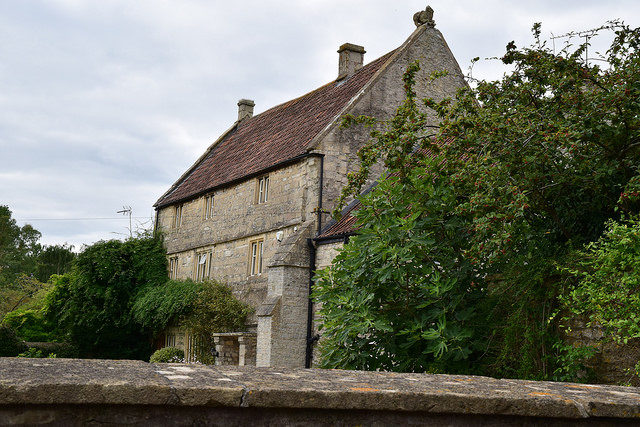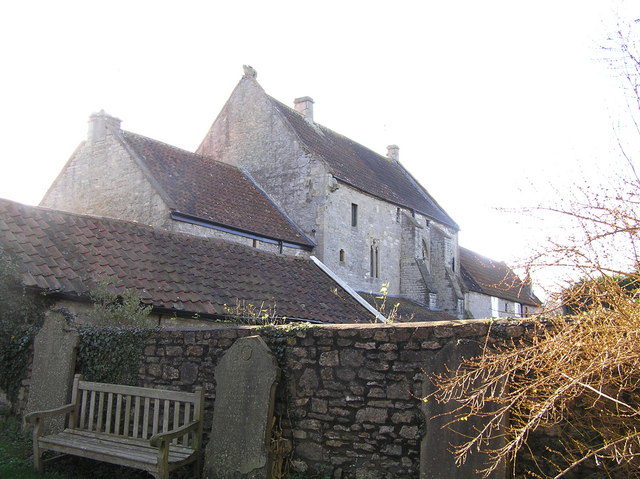The lovers of things of historic interest are always on the look-out for anything that retains the patina of its past, whether it’s an object or a building full of memories that wears its shabbiness with a charming pride. Any antique item holds a unique story, one that lives on when in the hands of someone able to hear it, but historic homes are much more than that.
Standing the test of time, these buildings offer unique treasures and insights to their occupants. One such place can be found near Bristol in the English county of Somerset, and is known as Saltford Manor House.
Saltford Manor is thought to be the oldest continuously inhabited house in Britain. It is believed to date from before 1150, probably 1148, a fact that particularly surprised James and Anna Wynn, the owners of the house for more than 10 years. According to The Guardian, the couple bought the house in 1997 because they wanted a new spacious home to raise their family in, as their former house in London grew too small.

But after Saltford Manor was recognized by Country Life magazine as the oldest continuously occupied house, the life of Mr. Wynn changed. He immersed himself in history and became a consultant on building conservation. He wrote and book and proudly reported that living in the house gave him a wonderful sense of history as he can look at Norman, Tudor, and even 17th century architecture each morning before he brushes his teeth.
A Grade II listed building of Norman origin, Saltford Manor was built on an estate that was owned by the Bishop of Coutances, followed by Geoffrey de Montbray and then the Earl of Gloucester. Over the period of 1558 to 1603 there were several owners of the manor before it fell into the hands of the Duke of Chandos until the late 18th century. The place came into the possession of the Flower family up to the late 19th century, when it was taken over by the farmers Mrs. Mary Roche and George John Roche. The manor fell into disrepair until the early 1940s, when it became a headquarters for the Saltford Boy Scouts and was later lived in spasmodically by various owners during the 20th century. When the Wynns purchased it, they completely renovated the interior to turn it into a comfortable home.
Its location is to the west of St. Mary’s Church, suggesting that it might have been the rectory for the parish priest of the church. Its Norman and ecclesiastical origins are evidenced by the Norman window, which is quite similar in many respects to a similar feature in Hereford Cathedral, built in the same period. On the northeast side of the house can be found medieval fish ponds that suggest production and storage of fish as the main food source for the inhabitants of the time.
The original house of 1148 had two storeys. Over time, however, it has gone through many structural and architectural changes, some of them quite major in scale. In the 13th century, the parlor room was converted to a chapel. Two centuries later, a two-storey wing was built, attached to the eastern end of the house. The cellar was chosen to be the center of social gatherings as it was converted into a living room-like space with a fireplace. The facade of the building was altered in the 17th century with dressed stone and mullioned windows. Another interior feature from this period is the practice of Marquetry, a technique that introduced inscriptions onto fireplace and plaster moulding. From the 19th to the 21st century, outbuildings including a barn and a garden room, but unfortunately, the chapel collapsed and was not restored.

Perhaps the most intriguing feature of Saltford Manor is the series of medieval wall paintings that were accidentally discovered by the Saltford Boy Scouts in the early 1940s when the house was used as their headquarters. Reportedly, the Scouts damaged some wall plaster and found a wall painting beneath it. The paintings represent the Madonna and Child and a Wheel of Fortune. Today, they are recognized as the oldest domestic wall paintings in England.
In 2010, the Wynns sold the house for about $1.7 million.
